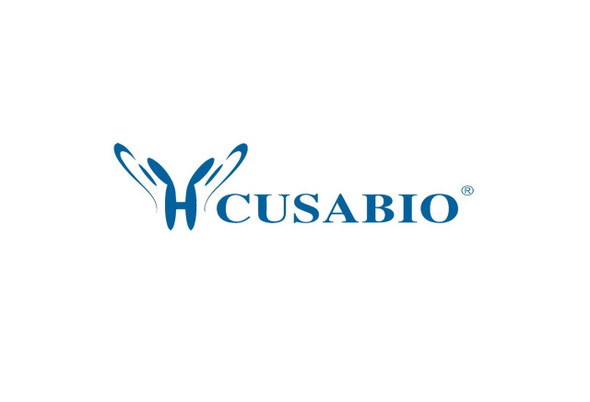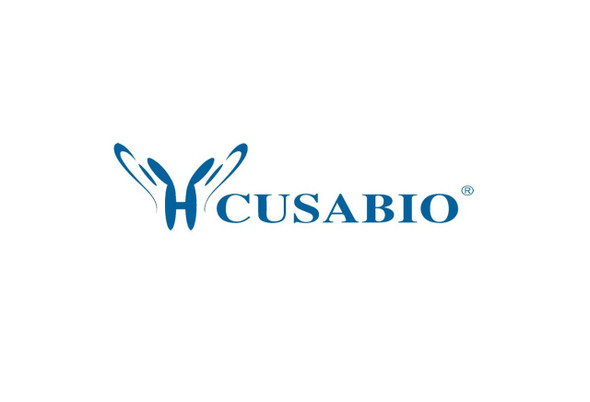Cusabio Human Recombinants
Recombinant Human Serine/threonine-protein phosphatase 2A activator (PTPA) | CSB-EP620876HU
- SKU:
- CSB-EP620876HU
- Availability:
- 13 - 23 Working Days
Description
Recombinant Human Serine/threonine-protein phosphatase 2A activator (PTPA) | CSB-EP620876HU | Cusabio
Alternative Name(s): PP2A, subunit B', PR53 isoform Phosphotyrosyl phosphatase activator
Gene Names: PTPA
Research Areas: Others
Organism: Homo sapiens (Human)
AA Sequence: AEGERQPPPDSSEEAPPATQNFIIPKKEIHTVPDMGKWKRSQAYADYIGFILTLNEGVKGKKLTFEYRVSEMWNEVHEEKEQAAKQSVSCDECIPLPRAGHCAPSEAIEKLVALLNTLDRWIDETPPVDQPSRFGNKAYRTWYAKLDEEAENLVATVVPTHLAAAVPEVAVYLKESVGNSTRIDYGTGHEAAFAAFLCCLCKIGVLRVDDQIAIVFKVFNRYLEVMRKLQKTYRMEPAGSQGVWGLDDFQFLPFIWGSSQLIDHPYLEPRHFVDEKAVNENHKDYMFLECILFITEMKTGPFAEHSNQLWNISAVPSWSKVNQGLIRMYKAECLEKFPVIQHFKFGSLLPIHPVTSG
Source: E.coli
Tag Info: N-terminal 10xHis-SUMO-tagged and C-terminal Myc-tagged
Expression Region: 2-358aa
Sequence Info: Full Length of Mature Protein
MW: 60.5 kDa
Purity: Greater than 90% as determined by SDS-PAGE.
Relevance: PPIases accelerate the folding of proteins. It catalyzes the cis-trans isomerization of proline imidic peptide bonds in oligopeptides. Acts as a regulatory subunit for serine/threonine-protein phosphatase 2A (PP2A) modulating its activity or substrate specificity, probably by inducing a conformational change in the catalytic subunit, a proposed direct target of the PPIase. Can reactivate inactive phosphatase PP2A-phosphatase methylesterase complexes (PP2A(i)) in presence of ATP and Mg2+. Reversibly stimulates the variable phosphotyrosyl phosphatase activity of PP2A core heterodimer PP2A(D) in presence of ATP and Mg2+ (in vitro). The phosphotyrosyl phosphatase activity is dependent of an ATPase activity of the PP2A(D):PPP2R4 complex. Is involved in apoptosis; the function appears to be independent from PP2A.
Reference: "Structure and chromosomal localization of the human gene of the phosphotyrosyl phosphatase activator (PTPA) of protein phosphatase 2A." Van Hoof C., Aly M., Garcia A., Cayla X., Cassiman J.-J., Merlevede W., Goris J. Genomics 28:261-272(1995)
Storage: The shelf life is related to many factors, storage state, buffer ingredients, storage temperature and the stability of the protein itself. Generally, the shelf life of liquid form is 6 months at -20?/-80?. The shelf life of lyophilized form is 12 months at -20?/-80?.
Notes: Repeated freezing and thawing is not recommended. Store working aliquots at 4? for up to one week.
Function: PPIases accelerate the folding of proteins. It catalyzes the cis-trans isomerization of proline imidic peptide bonds in oligopeptides. Acts as a regulatory subunit for serine/threonine-protein phosphatase 2A (PP2A) modulating its activity or substrate specificity, probably by inducing a conformational change in the catalytic subunit, a proposed direct target of the PPIase. Can reactivate inactive phosphatase PP2A-phosphatase methylesterase complexes (PP2A(i)) in presence of ATP and Mg(2+) (By similarity). Reversibly stimulates the variable phosphotyrosyl phosphatase activity of PP2A core heterodimer PP2A(D) in presence of ATP and Mg(2+) (in vitro). The phosphotyrosyl phosphatase activity is dependent of an ATPase activity of the PP2A(D)
Involvement in disease:
Subcellular Location: Cytoplasm, Nucleus
Protein Families: PTPA-type PPIase family
Tissue Specificity: Widely expressed.
Paythway:
Form: Liquid or Lyophilized powder
Buffer: If the delivery form is liquid, the default storage buffer is Tris/PBS-based buffer, 5%-50% glycerol. If the delivery form is lyophilized powder, the buffer before lyophilization is Tris/PBS-based buffer, 6% Trehalose, pH 8.0.
Reconstitution: We recommend that this vial be briefly centrifuged prior to opening to bring the contents to the bottom. Please reconstitute protein in deionized sterile water to a concentration of 0.1-1.0 mg/mL.We recommend to add 5-50% of glycerol (final concentration) and aliquot for long-term storage at -20?/-80?. Our default final concentration of glycerol is 50%. Customers could use it as reference.
Uniprot ID: Q15257
HGNC Database Link: HGNC
UniGene Database Link: UniGene
KEGG Database Link: KEGG
STRING Database Link: N/A
OMIM Database Link: OMIM









